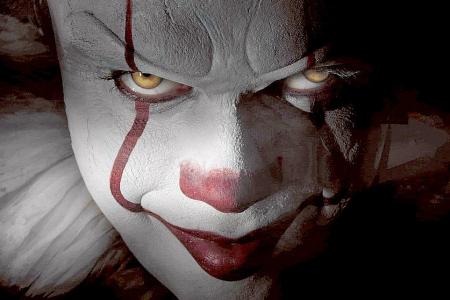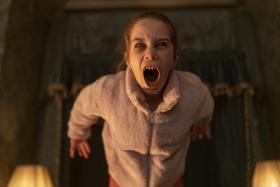Fear of clowns explained
Clinical psychologist says people may be mistaking their excitement for fear when seeing a clown
The big-screen remake of Stephen King's It, starring the evil entity Pennywise, has smashed box office records and reaffirmed an age-old rule of horror: Clowns are creepy.
But while countless movies and television shows have cashed in on coulrophobia - fear of clowns - the primal dread associated with the long-shoed entertainers probably is not Hollywood's fault.
Dr Alexandra Hamlet, a clinical psychologist at the Child Mind Institute in New York, said a large part of the fear comes from a phenomenon known as the "uncanny valley".
Developed by a Japanese robotics professor in 1970, the hypothesis is that human replicas that appear almost, but not quite, like real humans elicit feelings of revulsion.
Dr Hamlet specialises in the evaluation and treatment of mood and anxiety disorders, and said her work has led her to appreciate the close link between excitement and fear.
While fear of clowns is a real phenomenon, she believes much of what we call a phobia is nothing more than people "mis-coding" their emotions.
So the increase in heart rate, muscles tensing, dilated pupils and flushing of the cheeks when we see Pennywise, suggested Dr Hamlet, may be caused by excitement, not fear.
"A lot of these people can still go up to Ronald McDonald or something like that," Dr Hamlet said.
What they might actually be experiencing is a combination of discomfort with not being able to read the facial expression, and King doing a really good job freaking us all out, plus a mis-coding of fear and excitement."
Fear of clowns, psychologists believe, has existed since the days of the royal court jesters of 16th-century England.
But Dr Hamlet credited the 1990 TV miniseries of King's 1986 novel It - with Tim Curry's skin-crawling turn as Pennywise - for bringing the phobia into the mainstream.
Meanwhile, the new remake of It, starring Bill Skarsgard as Pennywise, has broken box office records for horror film opening weekends, taking a staggering US$189.7 million (S$256 million) worldwide.
It is showing in Singapore.
Dr Hamlet was prompted to look into coulrophobia last year when a spate of frightening clown appearances occurred across the US.
The sightings began in August last year, with reports of people in South Carolina dressed as clowns trying to lure children into the woods.
The appearances soon spread with more than 20 states reporting incidents.
Although most were pranks or unverified threats, police made a handful of arrests, including for physical attacks.
The craze even spread to Europe, South America and Australia, and the ensuing hysteria dealt yet another setback to the embattled clown community.
The World Clown Association was moved by the release of the It movie to release a statement that insisted "these horror characters are not clowns".
People dressed as horror clowns, it complained, were "taking something innocent and wholesome and perverting it to create fear in their audience". - AFP
Get The New Paper on your phone with the free TNP app. Download from the Apple App Store or Google Play Store now



